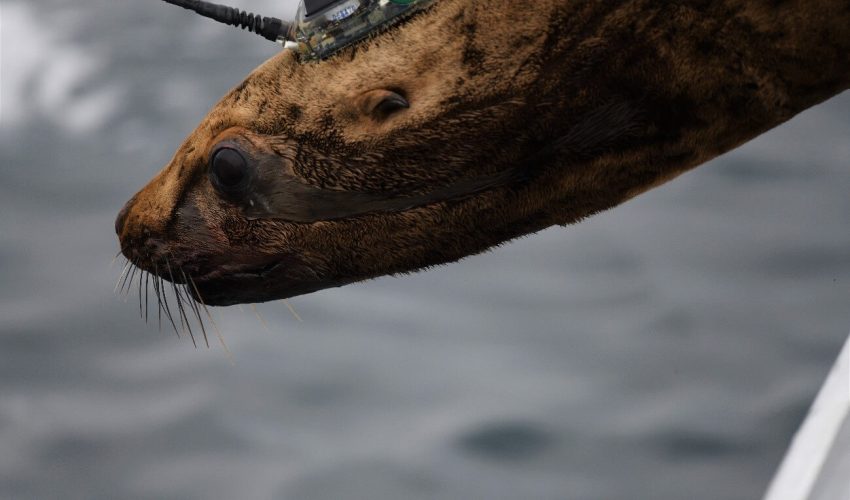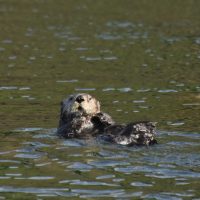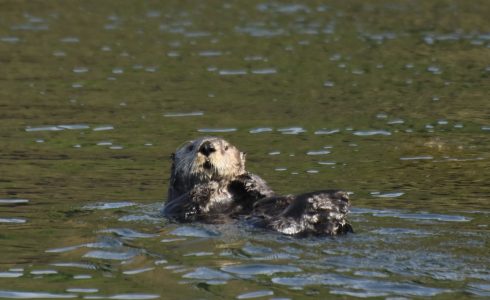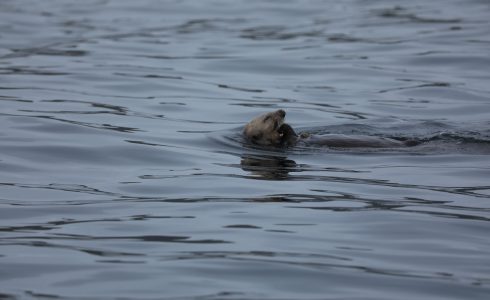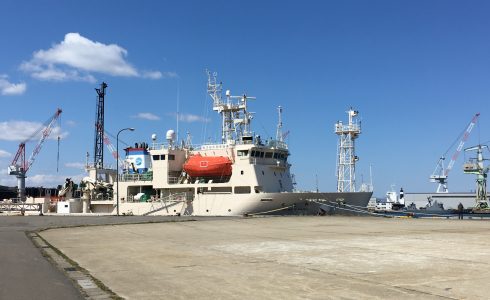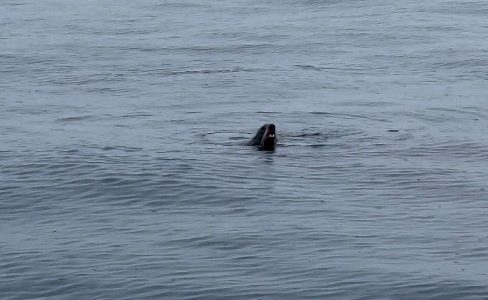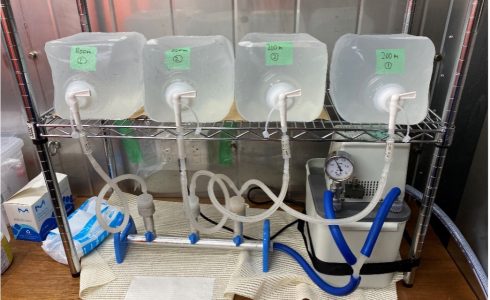Fig1. A CTD-logger deployed on the head of a male Steller sea lions, after the deployment this individual was released. The photo was taken when it attempted to get into the water.
D1のLさんがトド調査について報告してくれました!
We conducted 14-day fieldwork on the Steller sea lions at Sarufutsu, the northernmost village in Japan, between 2nd June and 15th June. The primary work of this trip was to deploy a CTD oceanography satellite relay data logger (CTD oceanography SRDL, made by the Sea Mammal Research Unit, University of St Andrews) on Steller sea lion. Unlike last year’s trip, we stayed nearby the survey site this year and conducted CTD-loggers deployment work intensively within 14 days. When the sea conditions allowed, we would get on the fishing boat, help fishermen harvest the fish, and, more importantly, check if any sea lions were trapped inside the set nets (定置網 in Japanese).
Fig2. Fishermen were sorting the harvested fishes by size and species. This fishing method is known as set net fishing, which only catch the fish that happen to enter the nets.
Steller sea lions (Eumetopias jubatus), called asトド in Japanese, are the largest extant otariid that seasonally occurs in the adjacent waters of Northern Japan. They distribute widely in colder temperate to subarctic waters of the North Pacific Ocean and range along the west coast of North America from California to Alaska, reaching the Bering Strait and the Asia coast. According to the genetic and morphological differences, Steller sea lions are reclassified into two distinct population segments (western and eastern DPS) at 144°W. Of which, the western DPS is subdivided into an Asian stock and the stock breeding along the Aleutian Islands. In the wintertime, individuals from the Asian stock were found to migrate southward toward the coastal waters of Hokkaido. While they gradually move northward after sea ice breaks up and back on their rookeries to conduct on-land activities in the following breeding season (early spring~ summer).
Seasonal distribution of Steller sea lions in the northern waters of Japan was mainly depicted from the sighting observations, while mark-recapture data outlined the compositions of overwintering stock. However, these methods only provide snapshot data and are unable to provide continuous migration information. To break off the spatial and temporal limitations in previous approaches, we deploy bio-telemetry devices on sea lions and use those tracking data to explore their at-sea movement under natural conditions. Moreover, we look forward to determining whether sea lions’ habitat preferences are associated with specific oceanographic features.
The CTD logger used in this study is a kind of satellite-linked logger. It could automatically transmit data to the Argos satellites while obtaining the physical oceanic environments (temperature, salinity, depth) that tracking animals may encounter. Different from the archival tags, satellite-linked loggers enable users to view and monitor the movements of that tracking individual without recapturing the animal to retrieve the device, which is a fantastic technology for tracking individual long-distance migrants. Meanwhile, it is also a powerful tool to observe sea lions’ at-sea movements during their northward migration as well as the physical oceanic environments in the Sea of Okhotsk.

Fig3. How CTD logger works to collect data from wild sea lions (modified from NOAA Fisheries and CLS Telemetry).
This year we deployed CTD loggers on two male sea lions with the help of local fishermen. However, one individual tracked from 27th May stopped transmission on 30th June, while another one tracked from 13th June stopped transmitting on 11th July (Fig4). For some unknown reason, we only tracked them for about one month (hope they are still alive). In addition to the satellite tracking data, we also collect the feces and vibrissa samples from these two individuals. Hereafter, we will conduct dietary analyses on those samples to illuminate their foraging ecology.
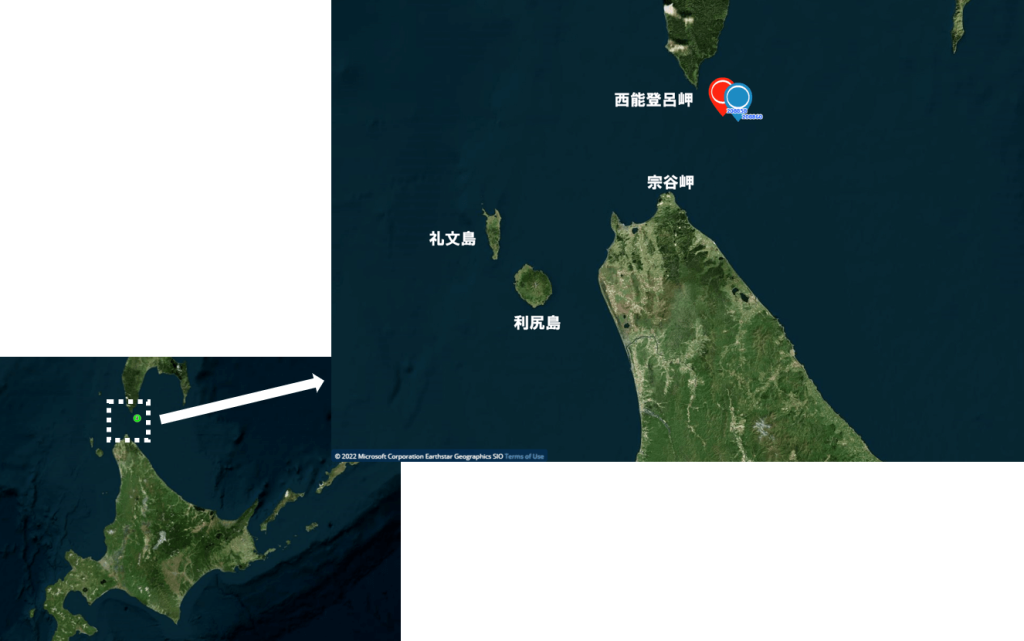
Fig4. At-sea locations of the last transmission from two tracking individuals, icon colored in red stopped transmission on 11th July, while icon in blue stopped transmission on 30th June.
Sightings of Steller sea lions in the northern waters of Hokkaido show an increasing trend. On the Benten-Jima Rock, located off Cape Soya, Hokkaido, Steller sea lions’ numbers have shown an extraordinary increase, whereas the reason is still unclear. Although some studies suggest Benten-Jima Rock serves as a stop-off point for Steller sea lions during their south-north migration, less is known about their specific migration patterns. Through the tracking data, we hope to comprehensively understand Steller sea lions’ seasonal movement and spatial preference, which may explain the mechanism of their habitat use. In addition, we will try to update our research process on the foraging ecology of Steller sea lions!
Reference:
https://www.fisheries.noaa.gov/species/steller-sea-lion
Goto, Y., Isono, T., Ikuta, S., & Burkanov, V. (2022). Origin and Abundance of Steller Sea Lions (Eumetopias jubatus) in Winter Haulout at Benten-Jima Rock Off Cape Soya, Hokkaido, Japan between 2012–2017. Mammal Study, 47(2), 1-15.
Burkanov, V. N., & Loughlin, T. R. (2005). Distribution and abundance of Steller sea lions, Eumetopias jubatus, on the Asian coast, 1720’s-2005.

